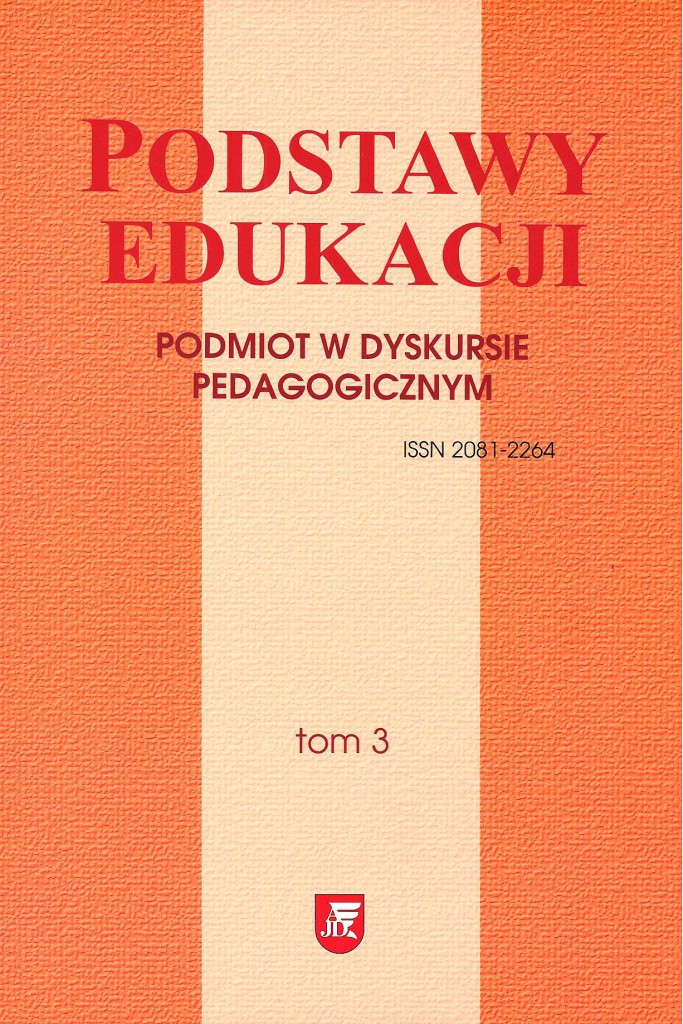Abstract
Children play with a world that is alive, kind, and sacred. In their original play children remind us that unity lies at the heart of life. It has been a principle of human wisdom traditions and more recently neuroscience that behind the apparent diversity of life lies a sense of unity and connection that is crucial for the development of human beings. The purpose of this article is to suggest that the Original Play® of children not only activates life’s inherent principle of kindness, but in doing so also demonstrates that the unity at the heart of life can be experienced and shared. Combined with the latest research in neuroscience and our wisdom traditions the role of Original Play® in child-centered education is to reinstate a sense of kindness as the optimum foundation for a truly child-centered education.
References
Atkinson, M.C. (2008). Soul Searching: The Journey of Thomas Merton. Collegeville, MN.
Austin, J. (1998). Zen and the Brain. Cambridge. MA.
Bateson, G. (1979). Mind and Nature: A Necessary Unity. New York: Bantam.
Begley, Sh. (May 4, 2009). Adventures in Good and Evil. Newsweek.
Berry, W. (2003). Citizenship Papers. Washington, DC.
Cahill, Th. (1999). The Gifts of the Jews. New York.
Chopra, D. (1989). Quantum Healing. New York.
Dalai Lama, Chan, V. (2004). The Wisdom of Forgiveness. London.
Davidson, R.J., Harrington, A. (2002). Visions of Compassion. London.
Ferrucci, P. (1990). Inevitable Grace. Los Angeles.
Fox, M. (1981). Whee! We, Wee All the Way Home. Santa Fe, NM.
Goleman, D. (2003). Destructive Emotions. A Dialogue with the Dalai Lama. London.
Goleman, D. (2006). Social Intelligence. New York.
Harrington, A., Zajonc, A. (red.) (2006). The Dalai Lama at MIT. Cambridge, MA.
Hayward, J. (1997). Letters to Vanessa. Boston.
Hayward, J.W., Varela, F.J. (2001). Gentle Bridges: Conversations with the Dalai Lama on the Sciences of the Mind. Boston.
Inchausti, R. (2007). Thomas Merton: On the Vocation of Writing. Boston.
Isaacson, W. (2007). Einstein: His Life and Universe. New York.
Johnson, R.A. (1998). Balancing Heaven and Earth. San Francisco.
Kirschenbaum H., Henderson V. (red.) (1989). Carl Rogers Dialogues. Boston.
Kornfield, J. (2009). The Wise Heart. New York.
Lifton, B.J. (1988). The King of Children: The Life and Death of Janusz Korczak. New York.
Lipton, B. (2005). The Biology of Belief. Santa Rosa, CA.
Newberg, A., Waldman, M.R. (2009). How God Changes Your Brain. New York.
Packer, T. (2007). The Silent Question. Boston.
Pfaff, D.W. (2007). The Neuroscience of Fair Play. New York.
Rivkin, J. (2009). The Empathic Civilization. New York.
Sayama, M. (1986). Samadhi. Albany.
Siegel, D.J. (2007). The Mindful Brain. New York.
Tagore, R. (2008). Sadhana: The Realization of Life. Radford, VA.
Tutu, D. (2010). Made for Goodness. New York.
Weber, R. (1986). Dialogues with Scientists and Sages. London.
Wiesel, E. (1990). Crimes Against Childhood. W: We, The Children. New York.
Wilber, K. (1991). Grace and Grit: Spirituality and Healing in the Life and Death of Treya Killam Wilber. Boston.
Woodruff, J., Woodruff, S.C. (red.) (1992). Conversations with Robert Coles. Jackson, MS.
I am aware that the journal is published under the Creative Commons Attribution License (https://creativecommons.org/licenses/by/4.0/legalcode).
By submitting an article, I agree to make it available under this license.
